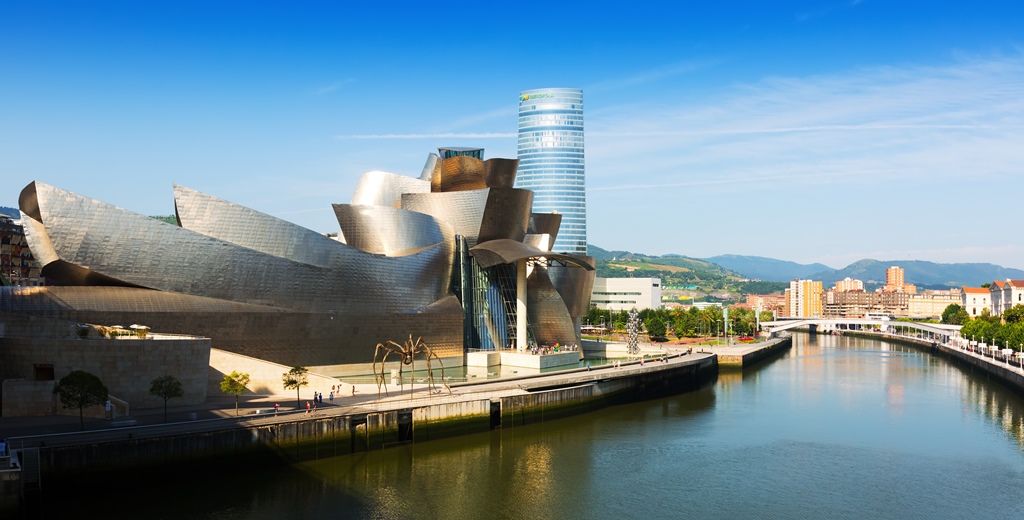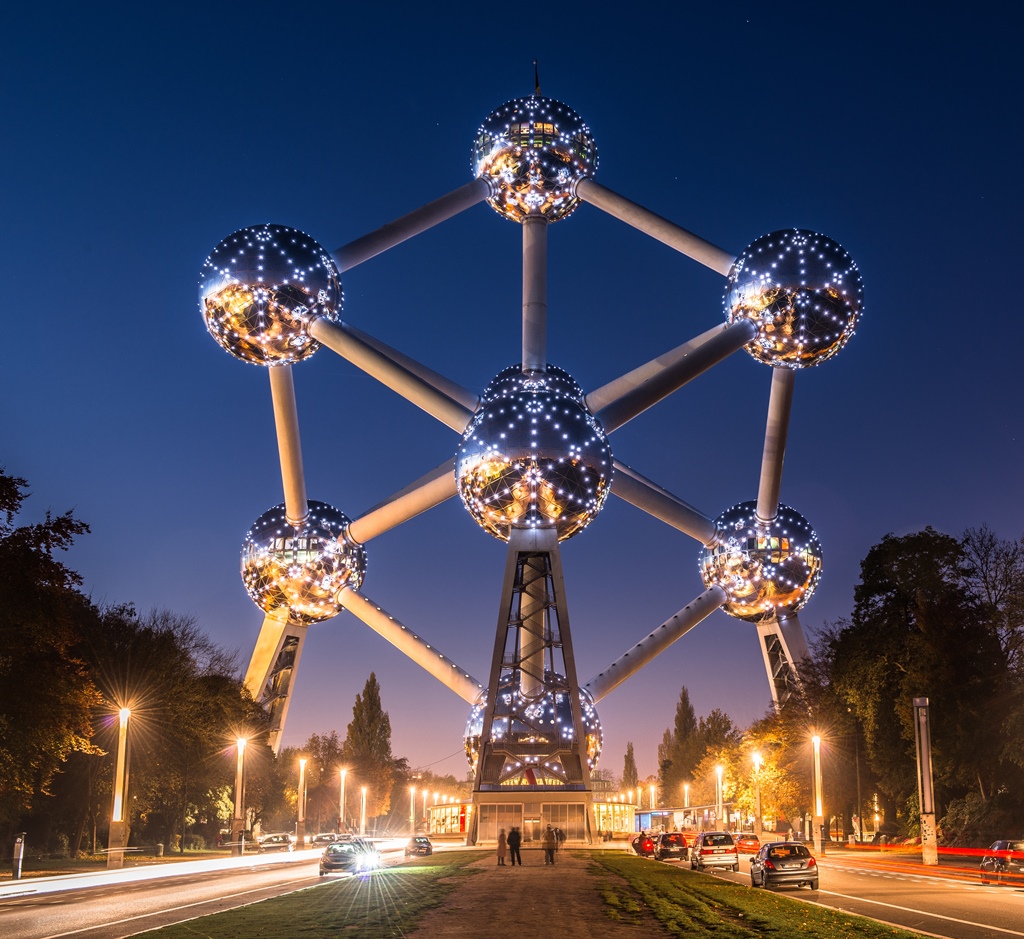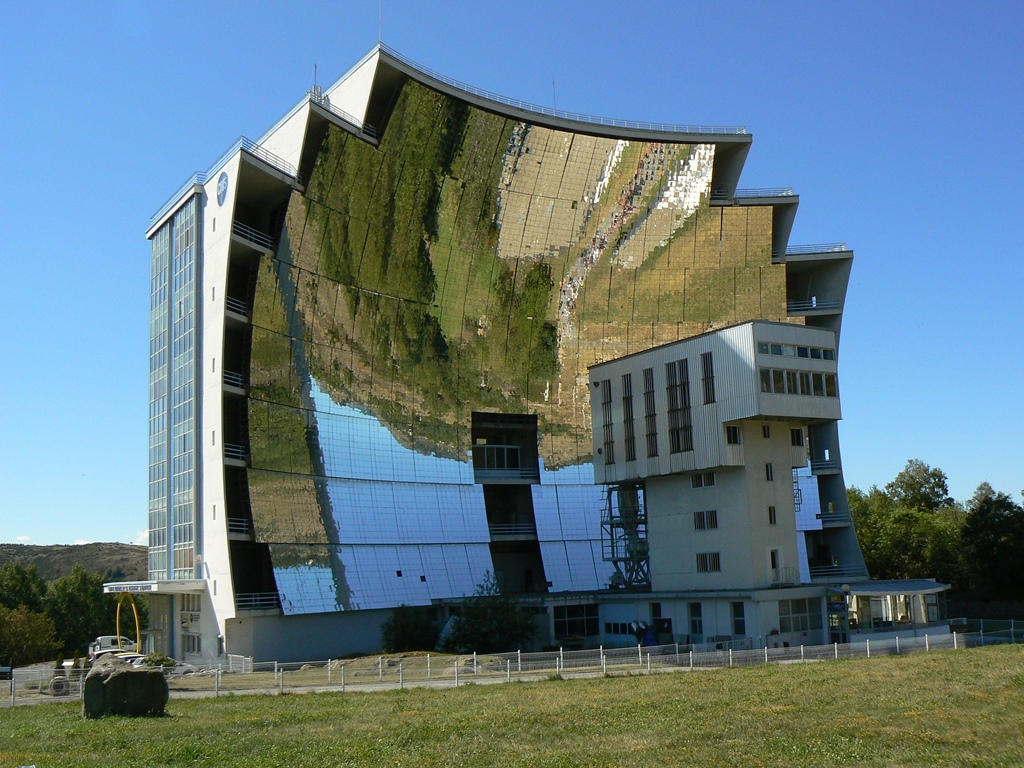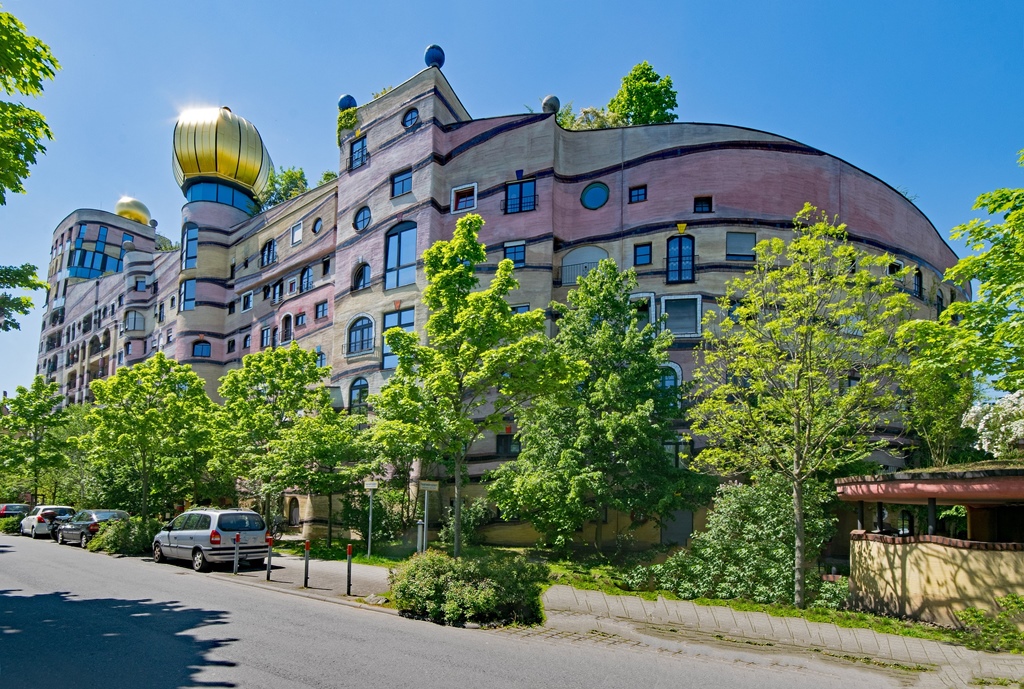Best Eay to Fill a Hole Near House Foundstion
Most unusual and unique buildings in Europe
European architecture is definitely the near diverse in terms of architectural styles which were irresolute over the centuries. From ancient Roman architecture to modern and futuristic-looking buildings , all those works are definitely worth of admiration. For our list, we have selected elevation 15 virtually interesting buildings which comprise both onetime and modern pieces of architecture which include museums, churches and residential buildings. So, let's check them out!
one) Guggenheim (Bilbao, Spain)
Guggenheim Museum was congenital in 1997 and it was projected by Canadian architect Frank Gehry and it represents one of the best examples of modern compages in the 20th century . The museum is role of the Guggenheim Foundation which aims to promote the agreement of mod and gimmicky art. In 1997, when the museum was synthetic, information technology was the largest museum of all the Guggenheim projects. Nevertheless, another Guggenheim Museum is currently under construction in Abu Dhabi and it will be 2 times larger than the 1 in Bilbao.

2) Upside Downwardly Firm (Zakopane, Poland)
In case you're visiting famous ski resort Zakopane in Poland, don't forget to check out the so-called Upside Down House ( Dom Practise Gory Nogami in Polish). It is a tourist attraction which attracts more and more visitors every twelvemonth due to its unusual shape. The affair is that everything in this house is put upside downwardly – tables, chairs, even the bed and toilet . People who visit it unremarkably become confused and silly because information technology is such a strange experience, but the fun is guaranteed (some fifty-fifty claim it makes you experience drunk!). The entrance fee is only two€.

3) Krzywy Domek (Sopot, Poland)
Krzywy Domek or literally translated as the "crooked business firm" is probably the near iconic building in Sopot, Poland. It was built in 2004 as a part of the shopping center in Sopot. Its "wavy" shape was inspired past fairytale illustrators January Marcin Szancer and Per Dahlberg and as well by Antoni Gaudi'due south houses in Barcelona. Inside the Krzywy Domek you'll find a coffee shop so you tin catch a loving cup of coffee and savor in this wonderful slice of mod architecture.

four) Markthal (Rotterdam, Netherlands)
Market Hall in Rotterdam is both role and residential circuitous in the center of Rotterdam. It houses more than than 200 apartments and 4-storey machine garage with the capacity of +thousand cars. But why is this building and then special? Offset of all, its facade is covered completely in glass while the interior is covered with 11 000m2 of artwork done past Arno Coenen. The artwork consists of bright juncture of flora and fauna and it was done via 3D digital engineering and it was amidst the showtime buildings to utilize 3D techniques. Some even like to telephone call it "the mod Sistine Chapel".

5) Casa Milà (Barcelona, Spain)
As well known every bit La Pedrera, Casa Milà is the last architectural masterpiece of Antoni Gaudí before he entirely dedicated himself to projecting Sagrada Familia. It represents a human being-made mountain with numerous irregular shaped windows that look like a hole in the cave and balconies, each of which has a unique iron fence. The house actually has two houses, connected by the facade, the ground floor and the roof. The most interesting role of the business firm is by far the rooftop. Called "the garden of warriors", the rooftop is known for its distinctive 28 chimneys which kind of resemble soldiers who protect the roof. Casa Milà was listed as World Heritage by UNESCO in 1984. Initially, the firm was built for Roser Segimón and her husband Pere Milà who were the original owners of the house until it became a museum in 1986.

vi) St. Basil'south Cathedral (Moscow, Russian federation)
The most famous church in Moscow and peradventure the about known monument in entire Russian federation is St. Basil's Cathedral. This architectural wonder is listed as UNESCO Earth Heritage and it is one of the most unusual churches in the world. The cathedral actually consists of eight smaller chappells gathered around the main ane, dedicated to St. Basil. The colorful towers have "onion" domes because this shape was suitable for dealing with snow which, nosotros all know, is a common affair in Russia. Information technology was non until the 17th century when the church was painted in the colours we see today – not many people know that original church was really white (with golden domes), to match the Kremlin's white rock.

7) Hallgrimur Church (Reykjavik, Iceland)
At 74.5 metres, this unique Lutheran Church building in the capital of Iceland is the tallest church building in Republic of iceland. The style of the church building belongs to expressionist compages style. The unusual shape of Hallimgur Church was inspired by the shape of basalt rocks (similar to those in Giant's Causeway). Originally, the church building wasn't supposed to exist and so tall, but the plan was to surpass the Catholic Cathedral in Reykjavik. Visitors are as well free to take lift upwardly to the acme of the church to accept the panoramic view of Reykjavik.

8) Atomium (Brussels, Belgium)
Although it is not really a building, Atomium certainly deserves a identify on this list. This famous landmark in Brussels was originally built for the World's Expo Fair in 1958 and since then information technology gets more than than 1000000 visitors every year. The construction consists of nine stainless steel clad spheres connected in fashion that they together make a form of a "prison cell". 5 of them can be visited and you lot tin can check out their permanent exhibitions while the height sphere has a restaurant where y'all can have dinner with the most spectacular view! CNN travel has even listed information technology as Europe's most bizarre building in 2013.

9) 4 Solaire (Odeillo, France)
This largest solar furnace is one of the most of import science research sites in Europe . Situated in Font-Romeu-Odeillo-Via district (close to the border with Kingdom of spain), the Odeillo furnace is in total 54 metres loftier and 48 metres wide. Why Odeillo – you lot ask yourselves? The reason to this is because Odeillo has the largest amount of sunshine over the year (more than 2500 hours per twelvemonth) and thanks to high altitude (1,312–2,212 m), the air is mostly clear and humidity is depression. The solar furnace basically works on a principle of rays concentrated by reflecting 9600 mirrors which results in getting corporeality of energy equivalent to "10 000 suns". Too, temperatures above 3500 °C can be reached in just a few seconds.

10) Waldspirale (Darmstadt, Germany)
The Waldspirale (or woods spiral in English) is not just another random residential building. This architectural wonder designed by Friedensreich Hundertwasser is located in Darmstadt in Germany and it was built at the terminate of 1990s. The specific U-shape of the building is characterized by unique multi colored facade and lack of straight lines . Interestingly, not ane out of 1000 windows is the same and the handles on the doors are besides different. The inner wall corners are also rounded to match the outer ones. The building has 105 apartments, a garage and a playground for children with tiny artificial lake. Despite its irregular shape, the highest bespeak of the building goes up to the 12th flooring.

11) Dancing House (Prague, Czechia)
This unusual building in the center of Prague attracts many visitors every year. It was designed by Czech architect Vlado Milunic in cooperation with Frank Gehry (who projected Guggenheim in Bilbao). Although initially the building supposed to be oriented towards culture and fine art, it eventually became business organisation edifice with offices and a French restaurant on the last flooring. The windows have convex frames like to those of paintings because the intention of the designer was to make them have a 3D effect.

12) Cubic Houses (Rotterdam, Netherlands)
Some other interesting construction in Rotterdam are the so-called Cubic Houses. These innovative houses are located about the Blaak Subway Station in Rotterdam and there are actually people living within these cubes. Since these houses oftentimes attract curious passers-by, one of the house owners decided to make money out of it by making one of the "cubes" available for tours , and then if you lot discover yourself in Rotterdam, make sure to pay a visit to this magnificent architectural wonder.

13) National Library (Minsk, Belarus)
National Library in Minsk is the tertiary largest library in the globe when it comes to drove of Russian literature just that is non what makes this building and then special. The library is 72 metres loftier and it is one of the all-time equipped libraries in Europe and it even has its own electronic resources. Besides beingness a multimedia library, it is besides a popular tourist attraction since the visitors are able to climb upwards to the viewing platform and get a spectacular view of Minsk. Very often the surface area in forepart of the library serves as exhibition and concert venue.

14) Temple Expiatori del Sagrat Cor (Barcelona, Spain)
Barcelona is, nosotros could say, the "capital" of extraordinary architecture, more often than not thanks to Antoni Gaudi. Also the worldwide famous Sagrada Familia, at that place is one more church building outside the city center which will definitely have your breath away. Continuing almost 550 metres above the sea level , on Mountain Tibidabo, this magnificent church building gives an unforgettable panoramic view of Catalan capital letter. The church was actually inspired by other ii churches which carry the name of Sacred Center (Sacré-Cœur in Paris and Sacro Cuore in Rome) and it has a statue of Jesus on top which resembles the one in Rio de Janeiro. The entrance to the church building itself is free, but if yous wish to take the lift up to the viewing platform, it will toll y'all 2€.

15) Kunsthaus (Graz, Austria)
As well known as the Graz Fine art Museum, this futuristic-looking building in the heart of Graz will definitely catch your eye. The building is relatively "young" since it was congenital in 2003 for the purpose of European Capital of Civilization plan. The museum has a shape of a robotic heart which makes it stand out from the typical Austrian architecture. The surface of the museum has almost 1000 fluorescent rings which create different patterns at nighttime, and what's best, virtually of the power energy of the museum comes from solar panels on the roof. Whether you lot're an art fan or not, this masterpiece is definitely worth of visiting!

kinrosspressita74.blogspot.com
Source: https://getbybus.com/en/blog/most-unusual-and-unique-buildings-in-europe/